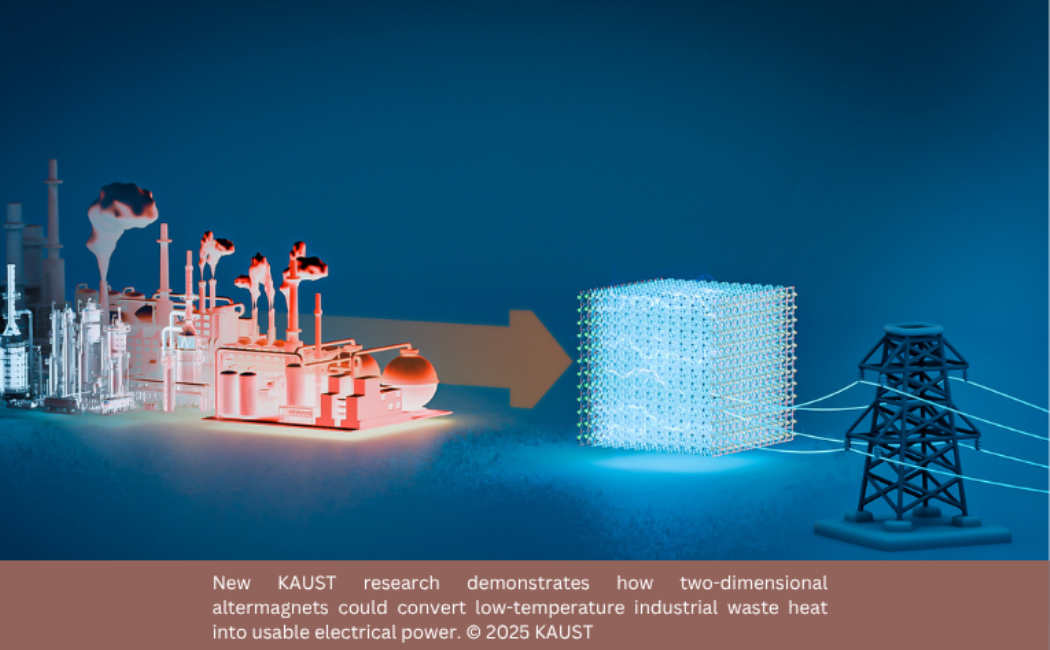


18 November, 2025
Vanadium-based monolayers with unconventional magnetic properties could help to transform industrial low-temperature waste heat into electric power, a KAUST study demonstrates.
Recovering waste heat relies on technologies specifically designed for the waste heat source. Existing technologies range from steam production to thermoelectric generators. Yet, low-temperature waste heat — typically below 500 K and representing more than half of all industrial waste heat — is more difficult to recover than its high-temperature counterpart.
Thermoelectric materials convert a temperature difference into electricity, offering a promising solution for power generation. However, the existing low-efficiency devices for low-temperature waste heat are useful only for niche applications, where reliability, low maintenance, and energy independence are critical, such as in wireless sensor networks in factories and low-power equipment in remote locations.
Magnetism can strongly influence the electronic and thermal transport properties of materials. It can decouple the electronic transport coefficients to increase the thermoelectric efficiency, or figure of merit. It can also boost the thermoelectric efficiency by promoting lattice vibrations — known as phonons, which are quasiparticles that carry heat — thereby hindering heat transfer.
The newly discovered altermagnets, which feature a spin-split electronic band structure — meaning the energy levels for electrons differ depending on their spin direction — and zero magnetization, have received much attention due to their unusual magnetic properties. However, their thermoelectric behavior is unclear.
Now, Udo Schwingenschlogl and coworkers from KAUST have used numerical computations to gain insight into the potential of two-dimensional altermagnets as thermoelectric materials. They investigated the vanadium oxyselenide monolayer V2Se2O and its asymmetrical, or Janus, derivative, in which tellurium atoms replace every other selenium atom.
“The key challenge was capturing the complex coupling between the spin order, lattice vibrations, and heat transport in a two-dimensional material,” Schwingenschlogl says.
To treat these deeply intertwined aspects together, the researchers combined advanced first-principles simulations with the phonon Boltzmann transport equation to assess the lattice thermal transport. “This was computationally demanding but essential to achieve reliable predictions,” Schwingenschlogl adds.
Read more at KAUST Discovery.